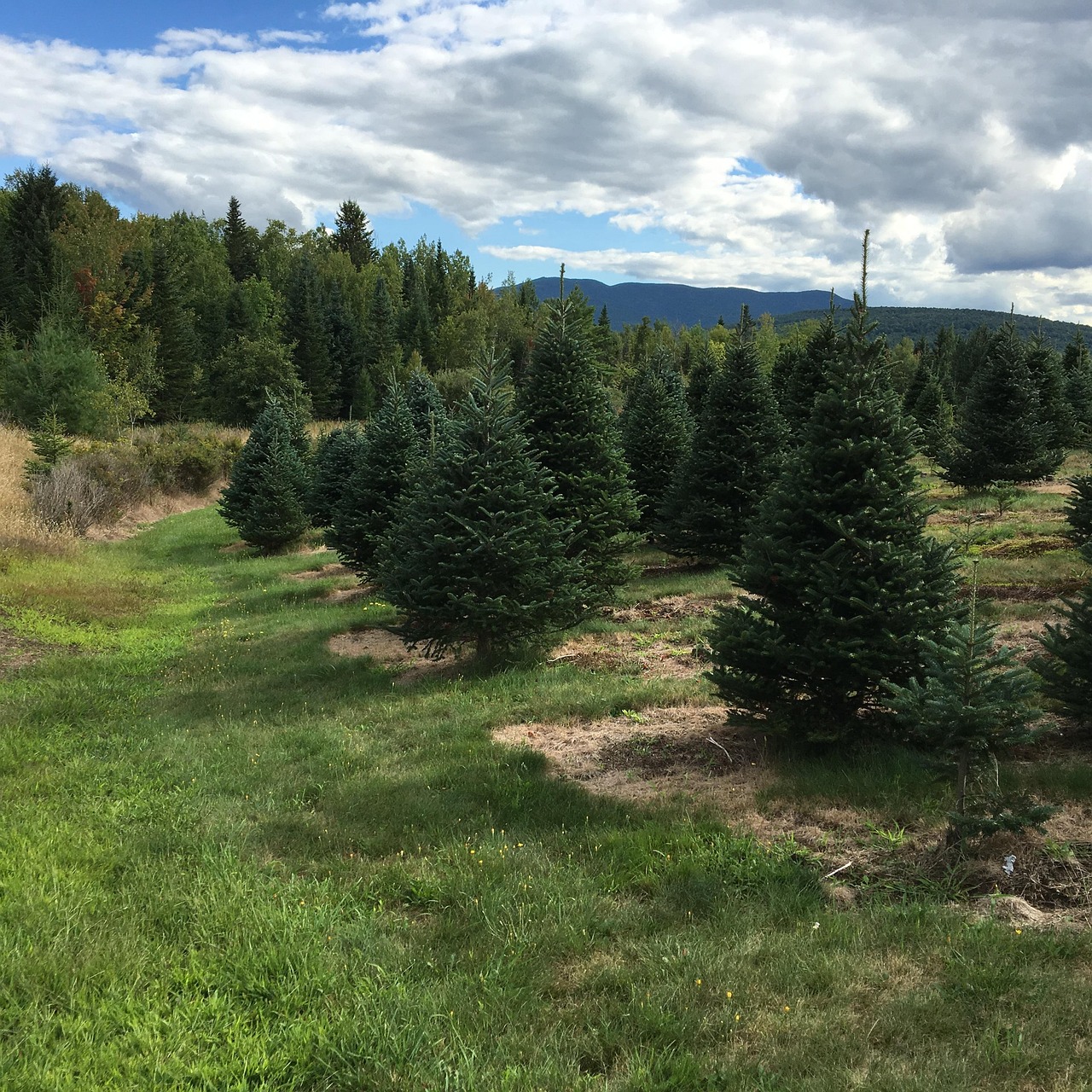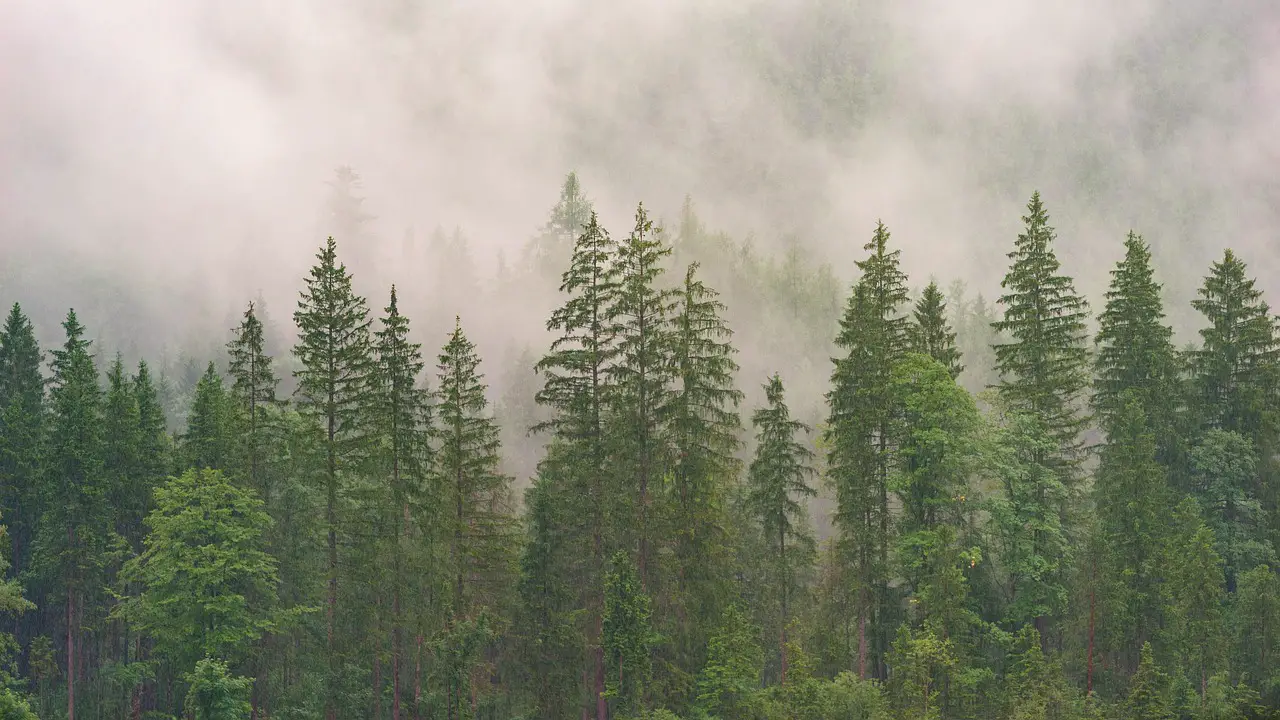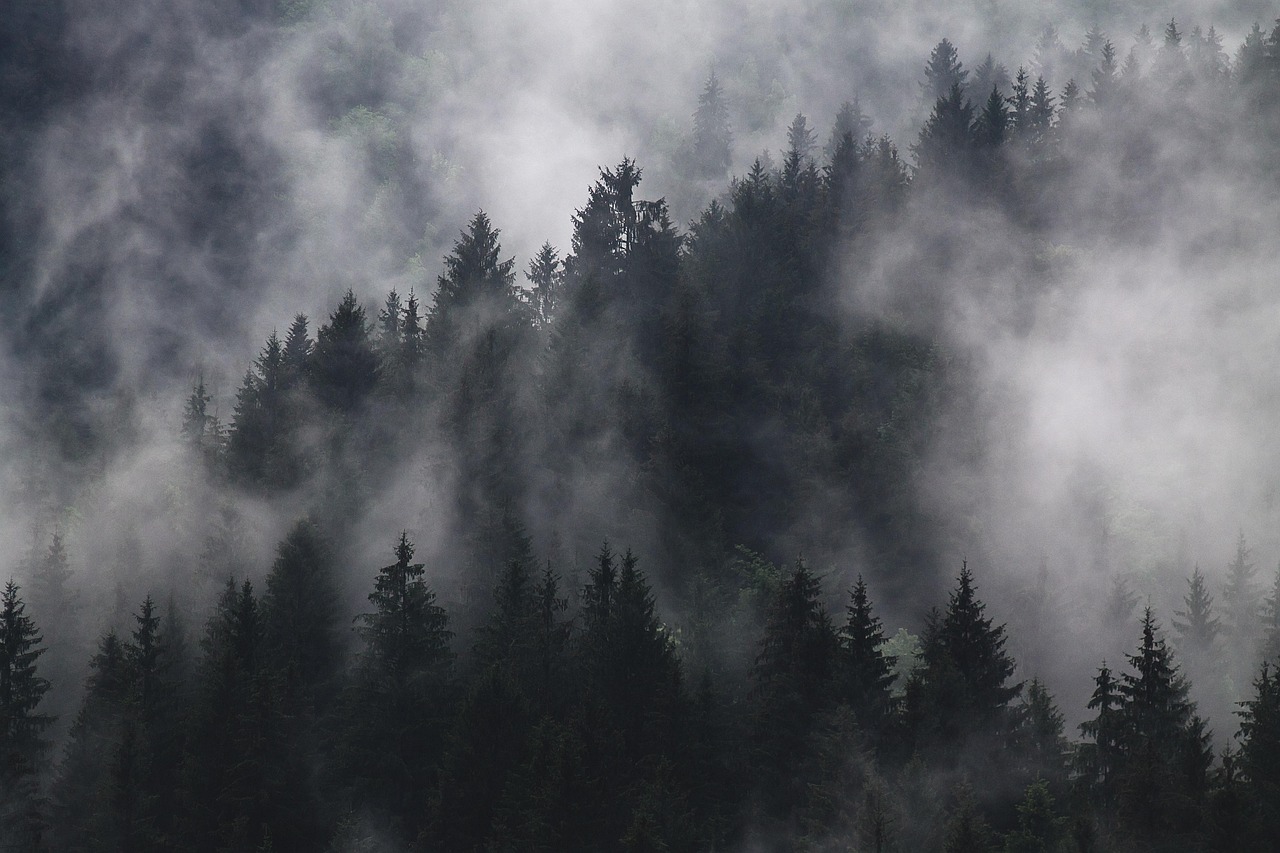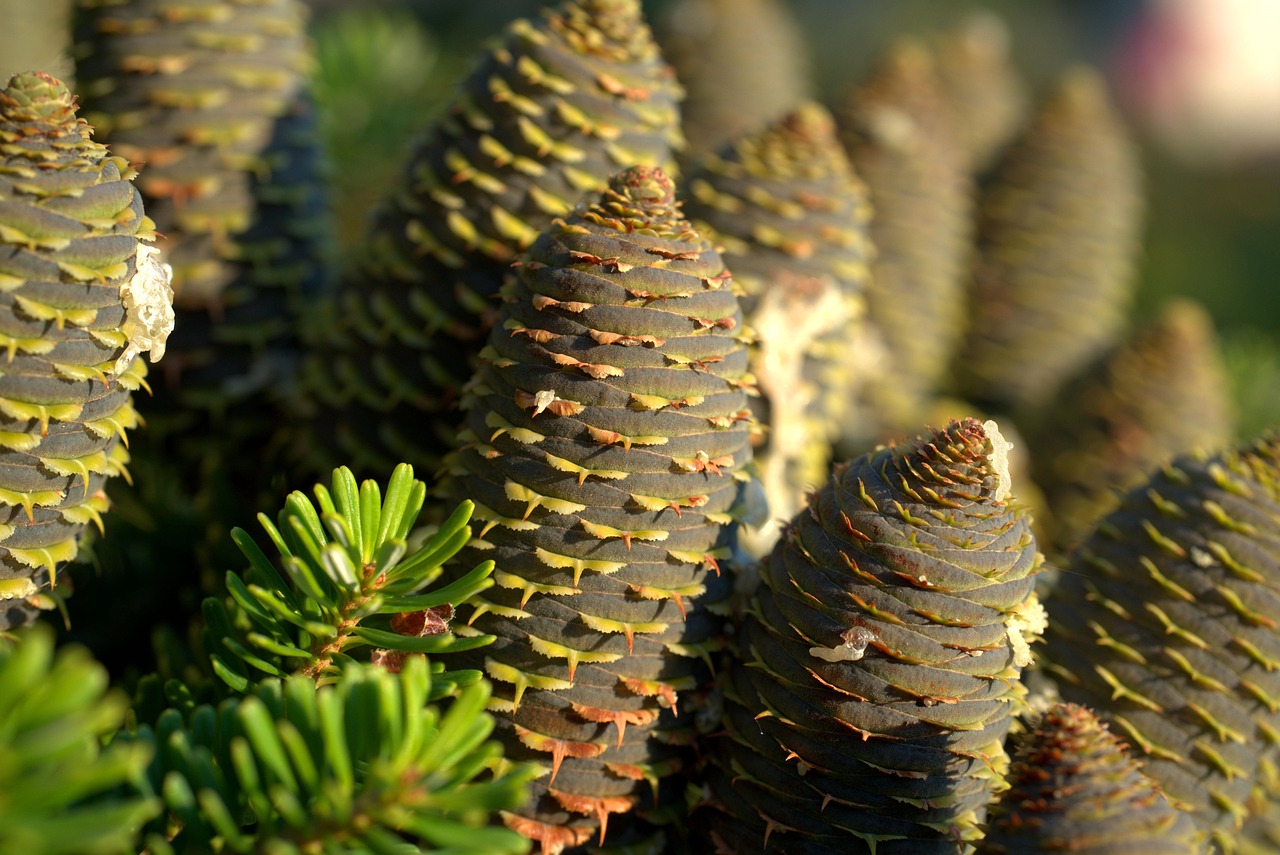Growing Balsam Fir trees in shaded areas is possible, as they naturally thrive in forest understories. While they prefer partial to full shade, these trees can adapt to lower light conditions, though growth may be slower. Key factors include soil quality, moisture, and protection from strong winds.
Balsam Fir (Abies balsamea) is a coniferous tree native to North America. It is particularly well-suited for cooler climates and is commonly found in the northeastern United States and parts of Canada. These trees are valued for their aromatic foliage and are often used as Christmas trees due to their symmetrical shape and needle retention. Growing Balsam Fir in shaded areas can be an excellent option for gardeners looking to enhance the beauty of their landscapes, especially in areas where sunlight is limited.
Understanding the natural habitat of the Balsam Fir is crucial for successful cultivation. In the wild, these trees typically grow under the canopy of taller trees, making them well-adapted to low-light conditions. They enjoy moist, well-drained soils rich in organic matter. This adaptation allows them to compete effectively for nutrients and water, even when sunlight is scarce.
Site Selection for Balsam Fir Trees

When planning to grow Balsam Fir trees in shaded areas, site selection is essential. Here are some factors to consider:
- Soil Type: Balsam Firs prefer acidic to neutral pH soils that are rich in organic material. Sandy loams or loamy soils are ideal.
- Drainage: Ensure that the planting site has good drainage to prevent root rot. Poorly drained areas can lead to waterlogged conditions.
- Moisture Levels: These trees thrive in consistently moist environments. However, they do not tolerate drought conditions well.
- Wind Protection: In shaded areas, wind can be more pronounced. Planting Balsam Firs where they are shielded from strong winds will help them establish more robustly.
One effective way to assess the suitability of your planting site is by conducting a soil test. A soil test will help determine the pH and nutrient levels in your soil, allowing you to make necessary amendments before planting.
Planting Balsam Fir Trees
The planting process for Balsam Fir trees is straightforward but requires attention to detail to ensure successful establishment. Follow these steps for optimal results:
- Preparation: Clear the area of weeds and debris. Dig a hole that is twice the width of the root ball and slightly deeper.
- Soil Amendments: If necessary, amend the soil with compost or peat moss to improve fertility and drainage.
- Planting: Place the tree in the center of the hole. Ensure that the top of the root ball is level with the soil surface.
- Backfill: Fill the hole with soil, gently tamping it down to eliminate air pockets.
- Watering: Water thoroughly after planting to help settle the soil around the roots.
- Mulching: Apply a layer of mulch around the base of the tree to retain moisture and suppress weeds.
Following these steps will create a conducive environment for your Balsam Fir trees to thrive, even in shaded conditions. It is also important to monitor their growth regularly and make adjustments as needed.
Caring for Balsam Fir Trees
Caring for newly planted Balsam Fir trees requires regular attention. Key care practices include:
- Watering: Maintain consistent moisture, especially during dry spells. Young trees may require watering once a week.
- Fertilization: Fertilize sparingly; over-fertilization can harm young trees. A balanced fertilizer applied in early spring can enhance growth.
- Pest Management: Keep an eye out for common pests such as aphids and bark beetles. Early detection and management are crucial.
- Pruning: Minimal pruning is needed, but removing dead or damaged branches can promote healthy growth.
By following these care guidelines, you can ensure that your Balsam Fir trees flourish in shaded areas and contribute positively to your landscape over time.
Common Challenges in Growing Balsam Fir Trees
While Balsam Fir trees are resilient and adaptable, they can face several challenges, especially when grown in shaded areas. Understanding these challenges will help you take proactive measures to ensure the health and growth of your trees.
Pest Issues
Balsam Fir trees can be susceptible to various pests. Identifying these pests early is crucial for effective management. Common pests include:
- Aphids: Small, soft-bodied insects that can weaken trees by sucking sap. Look for curling leaves or sticky residue on the foliage.
- Bark Beetles: These insects bore into the bark, disrupting nutrient flow. Signs include holes in the bark and sawdust around the base of the tree.
- Spruce Budworm: This pest can defoliate trees, especially in spring. Look for damaged buds and reduced growth.
To manage these pests, consider using insecticidal soap or neem oil. Regular inspections of your trees can help catch infestations early.
Disease Management
Balsam Fir trees may also encounter various diseases that can impact their growth. Some common diseases include:
- Root Rot: Caused by waterlogged conditions, root rot leads to yellowing leaves and stunted growth. Ensure proper drainage to avoid this issue.
- Needle Cast: This fungal disease results in needle drop and can weaken the tree. Maintaining airflow around your trees helps reduce humidity levels that favor fungal growth.
- Phytophthora Blight: Often associated with poor drainage, this disease can kill trees rapidly. Regularly inspect your soil conditions to prevent this issue.
Preventative measures such as proper watering, maintaining healthy soil conditions, and selecting disease-resistant varieties can minimize risks.
Soil and Nutrient Management
Soil quality plays a significant role in the successful growth of Balsam Fir trees. Understanding how to manage soil and nutrients can greatly enhance their health.
Soil Testing
Conducting a soil test is an essential first step in managing soil health. A soil test provides valuable information about pH levels and nutrient content. Here is how to perform a soil test:
- Collect Samples: Use a clean tool to collect soil samples from various spots around the planting area.
- Mix Samples: Combine the samples in a clean container to get a representative sample.
- Send for Testing: Send your mixed sample to a local extension service or a soil testing lab for analysis.
The results will guide you on necessary amendments to improve soil fertility and structure.
Nutrient Requirements
Balsam Fir trees benefit from specific nutrients that support their growth. Key nutrients include:
- Nitrogen: Essential for foliage growth; apply nitrogen-rich fertilizers in early spring.
- Phosphorus: Important for root development; consider bone meal or phosphate fertilizers if levels are low.
- Potassium: Helps with overall plant health; potassium sulfate can be used as a supplement.
A balanced fertilizer with equal parts nitrogen, phosphorus, and potassium can also be beneficial, especially if applied during the growing season.
Environmental Factors Affecting Growth
In addition to pests and soil quality, various environmental factors can influence the growth of Balsam Fir trees in shaded areas. Understanding these factors will help you create a more suitable environment for your trees.
Light Conditions
Balsam Fir trees do best in partial shade; however, too much shade can hinder their growth. Observing light patterns in your planting area is essential. If the area is excessively dark, consider thinning surrounding vegetation or selecting lighter-colored surfaces that reflect more light.
Temperature and Climate
Balsam Firs thrive in cooler climates. They prefer temperatures ranging from 60°F to 70°F during the growing season. In regions with extreme heat or prolonged droughts, consider providing additional mulch to retain moisture and regulate soil temperature.
Water Availability
Water availability is crucial for Balsam Fir trees. They prefer consistently moist conditions but do not tolerate soggy soils. Implementing effective irrigation practices, especially during dry spells, will aid in maintaining adequate moisture levels without overwatering.

By addressing these common challenges and environmental factors, you can ensure your Balsam Fir trees grow healthy and strong, even in shaded areas.
Propagating Balsam Fir Trees
Propagation of Balsam Fir trees can be achieved through several methods, including seeds, cuttings, and container-grown seedlings. Each method has its advantages and challenges. Understanding the various propagation techniques will help you choose the best approach for your needs.
Seed Propagation
Growing Balsam Fir from seeds is a common method and can be very rewarding. Here are the steps involved:
- Seed Collection: Collect seeds from mature cones in late summer to early fall. Ensure the cones are fully ripened, as they will open to release seeds.
- Seed Preparation: Clean the seeds by removing any debris or cone scales. Soak them in water for 24 hours to enhance germination.
- Cold Stratification: Place seeds in a damp medium and refrigerate for 30 days. This mimics natural winter conditions and breaks dormancy.
- Sowing: Plant seeds in a seed tray or directly in well-draining soil. Cover lightly with soil and water gently.
- Germination: Keep the soil moist, and place the trays in a sunny location. Germination typically occurs in 2-4 weeks.
This method allows for a large number of plants to be produced, but it requires patience as seedlings take time to grow.
Cutting Propagation
Another effective method for propagating Balsam Fir is through cuttings. This technique is often used for maintaining specific characteristics of a parent tree. Here are the steps:
- Selecting Cuttings: Choose healthy, non-flowering branches during the growing season. Aim for semi-hardwood cuttings that are about 4-6 inches long.
- Preparing Cuttings: Remove the lower leaves, leaving a few at the top. Dip the cut end in rooting hormone to encourage root development.
- Planting Cuttings: Insert cuttings into a pot filled with a well-draining potting mix. Water well and cover with a plastic bag or dome to maintain humidity.
- Root Development: Place in indirect light and maintain moisture. Roots should develop within 4-8 weeks.
Using cuttings can be quicker than growing from seeds, providing faster results for gardeners looking to establish new trees.
Container-Grown Seedlings
Purchasing container-grown seedlings is another viable option for those looking to grow Balsam Fir trees without going through the propagation process. Here are some considerations:
- Source Quality Seedlings: Buy from reputable nurseries that specialize in native plants. Ensure that the seedlings are healthy and free from pests or diseases.
- Acclimatization: Before planting, allow seedlings to acclimatize to your local environment by placing them outdoors for a few hours each day over a week.
- Transplanting: When transplanting, follow similar guidelines as mentioned in previous sections regarding soil preparation and watering.
This method is beneficial for those who want immediate results without the time commitment of propagation methods.
Mulching and Ground Cover
Mulching around Balsam Fir trees is an important practice that can significantly enhance their growth and health. Proper mulching provides several benefits:
- Moisture Retention: Mulch helps retain soil moisture by reducing evaporation, which is essential for trees growing in shaded areas.
- Weed Suppression: A layer of mulch prevents weed growth, minimizing competition for nutrients and water.
- Soil Temperature Regulation: Mulch acts as an insulator, keeping soil temperatures stable during temperature fluctuations.
- Nutrient Addition: Organic mulches break down over time, adding nutrients back into the soil.
A recommended mulch type for Balsam Fir trees includes shredded bark, wood chips, or pine needles. Apply a layer of about 2-4 inches around the base of the trees while keeping it away from the trunk to prevent rot.
Companion Planting with Balsam Fir Trees
Companion planting involves growing different plants close together for mutual benefits. When planting Balsam Fir trees, consider companion plants that thrive in similar conditions:
- Ferns: Many ferns grow well in shaded areas beneath Balsam Fir trees, providing ground cover and enhancing visual appeal.
- Wildflowers: Native wildflowers can attract beneficial insects and pollinators, promoting biodiversity.
- Berries: Low-growing shrubs such as blueberries can coexist with Balsam Fir trees, benefiting from the shade while producing fruit.
Selecting appropriate companion plants can enhance the ecological balance of your garden while providing additional aesthetic value.
Maintaining Balsam Fir Trees Over Time

Once your Balsam Fir trees are established, ongoing maintenance is essential to ensure their continued health and growth. Regular care will help you enjoy the beauty and benefits these trees provide for many years. Here are some important maintenance practices:
Seasonal Care
Different seasons require varying care strategies. Here is a breakdown of what to focus on throughout the year:
- Spring: This is the time for fertilization to promote new growth. Apply a balanced fertilizer and check for any signs of pests or diseases as the weather warms up.
- Summer: Monitor moisture levels carefully, especially during hot and dry spells. Water as needed to ensure your Balsam Fir trees remain hydrated.
- Fall: As leaves drop, take the opportunity to clear debris around the base of the trees. This helps reduce pest habitats. Mulch can also be replenished as necessary.
- Winter: Protect young trees from heavy snow loads and ice by gently shaking off snow accumulation on branches if necessary.
Long-Term Health Monitoring
Regular inspections are crucial for early detection of issues that may affect your Balsam Fir’s health. Here are some key aspects to monitor:
- Growth Rate: Keep track of how quickly your trees are growing. Stunted growth could indicate problems with soil, water, or pests.
- Foliage Color: Healthy Balsam Fir trees have vibrant green needles. Yellowing or browning can signal stress or nutrient deficiencies.
- Branch Integrity: Inspect branches for signs of damage or disease, such as dieback or unusual growth patterns.
Being proactive about monitoring these factors can help you address potential problems before they become severe.
Benefits of Growing Balsam Fir Trees
Planting Balsam Fir trees offers numerous benefits beyond their aesthetic appeal. Here are a few advantages:
- Environmental Impact: Balsam Fir trees contribute to carbon sequestration, helping to mitigate climate change by absorbing carbon dioxide from the atmosphere.
- Biodiversity Support: These trees create habitat for various wildlife species, including birds and insects, contributing to a healthy ecosystem.
- Erosion Control: The root systems of Balsam Fir trees help stabilize soil, preventing erosion in hilly or sloped areas.
- Aesthetic Value: With their beautiful form and fragrant needles, Balsam Fir trees enhance the visual appeal of any landscape, making them a popular choice for gardens and parks.

Final Thoughts
Growing Balsam Fir trees in shaded areas presents unique challenges and opportunities. With the right care practices, knowledge of their needs, and attention to environmental factors, you can cultivate healthy trees that thrive even in low-light conditions. From understanding soil and moisture requirements to managing pests and diseases, each step plays a critical role in ensuring your Balsam Fir trees flourish.
As you embark on your journey of growing these beautiful conifers, remember that patience is key. Whether you choose to propagate from seeds, cuttings, or purchase container-grown seedlings, each method offers its own rewarding experience. By implementing companion planting strategies and maintaining regular care, you will not only nurture the health of your Balsam Fir trees but also enhance the overall biodiversity and beauty of your landscape.
Your commitment to cultivating Balsam Fir trees can lead to a thriving environment that benefits both you and the ecosystem around you. Enjoy the process of watching your trees grow and flourish in their shaded surroundings, contributing to a greener planet for generations to come.
